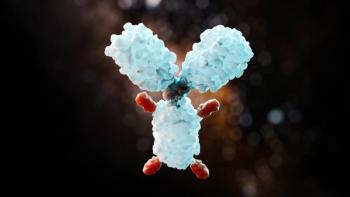
Expert: Immune Reconstitution With Orca-T Reveals ‘New Realm of Engineered Donor Grafts’ for Patients With Hematologic Malignancies
Expert discusses the results of a trial assessing immune reconstitution in adult patients who received Orca-T, consisting of hematopoietic stem/progenitor cells, regulatory T cells, and conventional T cells.
Pharmacy Times® interviewed Everett Meyer, MD, PhD, medical and scientific director of the Cellular Therapy Facility, Stanford Health Care and Assistant Professor of Medicine, Blood and Marrow Transplantation, Stanford University, on the poster presentation titled “Rapid Immune Reconstitution and Elevated Regulatory T Cell Frequencies in Patients Treated with Orca-T” at
Pharmacy Times®: What is Orca-T, and what was the focus of the phase 1b clinical trial assessing this therapy?
Everett Meyer: Orca-T is a cell therapy product that involves enrichment of T regulatory cells to help guide the reconstitution of bone marrow and metaphoric stem cells after transplantation. So precision products—we have defined ratios of specific cell constituents and immune cells that help guide again reconstitution.
The phase 1b trial was really to test the ability to scale the approach that was first developed at Stanford across the country and to test to see if the approach could prevent graft-versus-host disease (GVHD) and improve transplant outcomes. The trial itself was a feasibility and safety study which has been successful, and with a good signal that there is a reduction in [GVHD] and evidence for efficacy.
Pharmacy Times®: What was the population size and eligibility requirements in this trial?
Everett Meyer: The population that was studied is those generally eligible for allogeneic transplantation with full-intensity chemotherapy myeloablative conditioning. So that includes patients with acute leukemia myelodysplastic syndrome and other usually life-threatening disorders.
Pharmacy Times®: What were the endpoints of the trial, and how were the results assessed?
Everett Meyer: Well, the trial—so there are 2 clinical trials that we're reporting on. The first is the phase 1b clinical trial, which is a multicenter trial, and that was designed to assess safety and feasibility of sending graft products across the country.
The endpoints were achieved because it appears to be safe by the protocol evaluations and feasible because there were no manufacturing failures, which is remarkable. This is the first time something like this has been done on a national scale.
The second trial is a phase 2 trial, which was a single center study at Stanford. There we had an endpoint that was geared more towards efficacy, looking at the combined endpoint known as GVHD relapse free survival. So that's the perfect outcome for patients, meaning that you don't have disease relapse, that you don't have GVHD, or other complications, which are really affecting your quality of life. And we showed on that clinical phase 2 trial, that there indeed appears to be an improvement of GVHD relapse free survival at around 65% with trial participants, compared to what we would expect at around 30% to 40% for standard of care, and that trial reached statistical significance.
Pharmacy Times®: What did the results show regarding immune reconstitution in adult patients receiving Orca-T?
Everett Meyer: Yeah, immune reconstitution is an area that we are exploring—there's a lot more studies that need to be done. But what's remarkable is that for a cell therapy product in which you reduce the number of immune cells, for more precise immune reconstitution, we see very similar immune reconstitution as if you would give a whole graph. So that really shows in terms of the T cells and B cells, and other cells, there appears to be a lot of normal immune reconstitution, which suggests benefit in preventing infections.
Pharmacy Times®: What are the implications of these results and next steps?
Everett Meyer: So myeloablative stem cell transplantation, even for matched donors, remains a challenge. And only one-third of patients achieve that perfect outcome under standard of care and have no disease relapse, and no complications really affecting their quality of life, or even fatality.
So these results are exciting because we see what appears to be a very good improvement in the overall outcome going from third of patients achieving that perfect outcome to two-thirds of patients. So that could have significant effects on the number of patients that we can treat, how and when we treat them, and for what diseases we use myeloablative transplantation.
That also is exciting because it opens up a whole new realm of engineered donor grafts and different strategies that could be customized to different diseases or disease states, and it's very exciting.
Newsletter
Stay informed on drug updates, treatment guidelines, and pharmacy practice trends—subscribe to Pharmacy Times for weekly clinical insights.
















































































































































































































